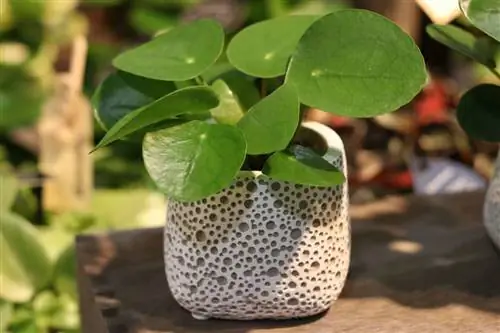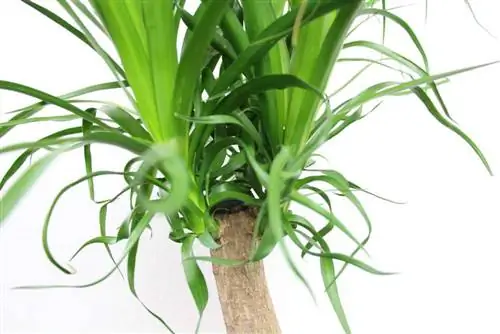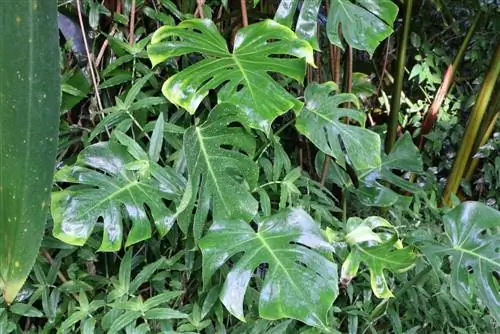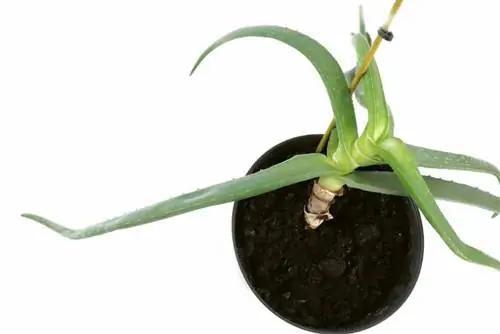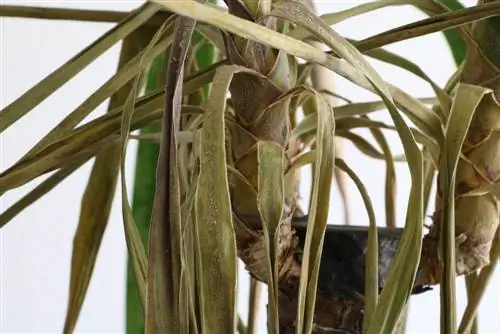- Author admin [email protected].
- Public 2023-12-17 03:39.
- Last modified 2025-01-24 12:45.
One yucca in the apartment is great, several are definitely better. If you want to build a small palm garden with these great plants, you would do well to simply propagate the existing ones. This works extremely well and is downright child's play. Offshoots and cuttings play the central roles. They can be used to increase the number of plants enormously relatively quickly.
Yucca elephantipes
Actually, this plant is not a palm tree at all, but an asparagus plant. Nevertheless, its shape undoubtedly has peculiarities that are not only classified as palm-like in Germany. Its exotic touch is probably one of the reasons why it has become one of the most popular houseplants over the last 30 years. The fact that the asparagus plant is relatively uncomplicated and undemanding certainly played and still plays a role. This also applies to the propagation of the plant, which in most cases does not take place via seeds, but rather via offshoots and cuttings that are simply placed in the ground or in water.
Tip:
Propagation by seeds is of course also possible, but it takes a very long time for the plant to actually produce seeds for the first time. Usually you can only put the seeds into conventional potting soil after several times.
Propagation in general
Basically, this plant is very easy to reproduce. Virtually all parts of the plant are suitable for growing a new specimen from. The most common questions for this are:
- Trunk or parts of the trunk
- individual shoots
- Root cuttings
- by dividing the plant

The latter is a special case, but it can have a big impact. However, division only makes sense if the entire plant is relatively lush and, above all, completely he althy. Otherwise there is a great risk that both pieces of plant will not survive after division. The propagation methods stem, shoots and root cuttings are absolutely harmless.
Tip:
Propagation over part of the trunk is particularly useful if the plant has to be shortened and the upper part of the trunk has to be sawn off. Then it is enough to stick the separated part into moist soil (growing soil) and wait for it to take root.
offshoot
The supposed palm tree regularly produces numerous offshoots in the root area. These can be used excellently to grow new plants. This is the best way to do it:
- Expose the offshoot plant part very carefully
- advance to the point where it is connected to the mother plant
- cut off directly at the connection with a sharp knife
- take the plant part out of the ground immediately
- fill the exposed area with soil again
- Place the exposed seedling in a pot with potting soil
- water well immediately and then water regularly
- wait until more roots develop, then repot if necessary
The growing soil should be as nutrient-rich as possible in order to provide the new plants with enough energy right from the start. In addition, an adequate water supply is of great importance. However, under no circumstances should waterlogging occur as this would damage the sensitive roots. After the plant part has grown, it can be repotted into a larger pot with potting or special palm soil.
Tip:
In order to reliably prevent waterlogging, there should be a layer of sand or a drainage layer in the growing pot to make it easier for the water to drain away.
Cuttings
In order to grow a new yucca palm from cuttings, you use certain parts of the plant. The side shoots of the existing plant are best suited for this. Alternatively, you can of course also use part of the trunk. However, obtaining a new plant from a stem section usually takes significantly longer.
Tip:
If you take a cutting from the trunk, the section must be between five and ten centimeters long. It should be cut from the side of the trunk with a sharp and clean knife.
The safest and most effective propagation from cuttings is undoubtedly via existing side shoots. The big advantage is that the shoots already have fully formed leaves, which promotes rapid root growth after planting. This is how you should generally proceed:
- Cut off shoots on the trunk with a sharp and clean knife
- Then insert the cutting into a mixture of potting soil and sand
- water intensively immediately, but do not create waterlogging
- Cover the cutting with a transparent film (greenhouse effect)
- Remove the film after around four weeks and transplant the cutting
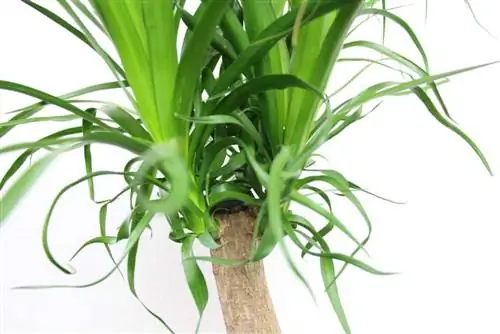
It is important to insert the cutting surface into the prepared soil. Depending on the size, the interface on the trunk of the mother plant may need to be sealed or closed. The cover provided by the film causes the humidity underneath it to increase, which in turn is good for root growth.
Tip:
As an alternative to foil, you can also use a cut-off plastic bottle that is placed over the cutting. This also creates the desired greenhouse effect.
Framework conditions
If you want to propagate your yucca palm, you should pay attention to the right conditions right from the start. In this way, success is significantly increased and there is a guarantee that he althy and strong new plants will be created. These general and site conditions roughly correspond to those required by a fully grown plant of this species. A location that is as bright as possible is particularly important. However, under no circumstances should there be direct sunlight there. The blazing midday sun must also be avoided. In addition, humidity plays a major role. It should be very high.
This can be achieved, among other things, by regularly spraying the plant with fresh, low-lime water. It may also always help to attach a new foil cover from time to time. If the respective potting soil is nutrient-rich, no additional fertilizer needs to be applied to offshoots and cuttings in the first few weeks. Always water carefully directly in the area of the roots.
Tip:
Immediately after rooting, the young plant should be somewhat sheltered from the wind. This can also be done outdoors.
Tools
In order to obtain offshoots or cuttings, only tools that are as sharp as possible should be used. Knives with and without serrations are particularly suitable for this.
The blades of the tools must be absolutely clean so as not to introduce germs into the mother plant through the cut. The necessary cut should be done quickly and in one go if possible. It is important to avoid sabering around on the offshoot for seconds. If the cut on the mother plant is particularly large or if it secretes a lot of sap, it must be closed.
Tip:
It is best to use special resin to close plant wounds, which can be purchased from specialist retailers.


